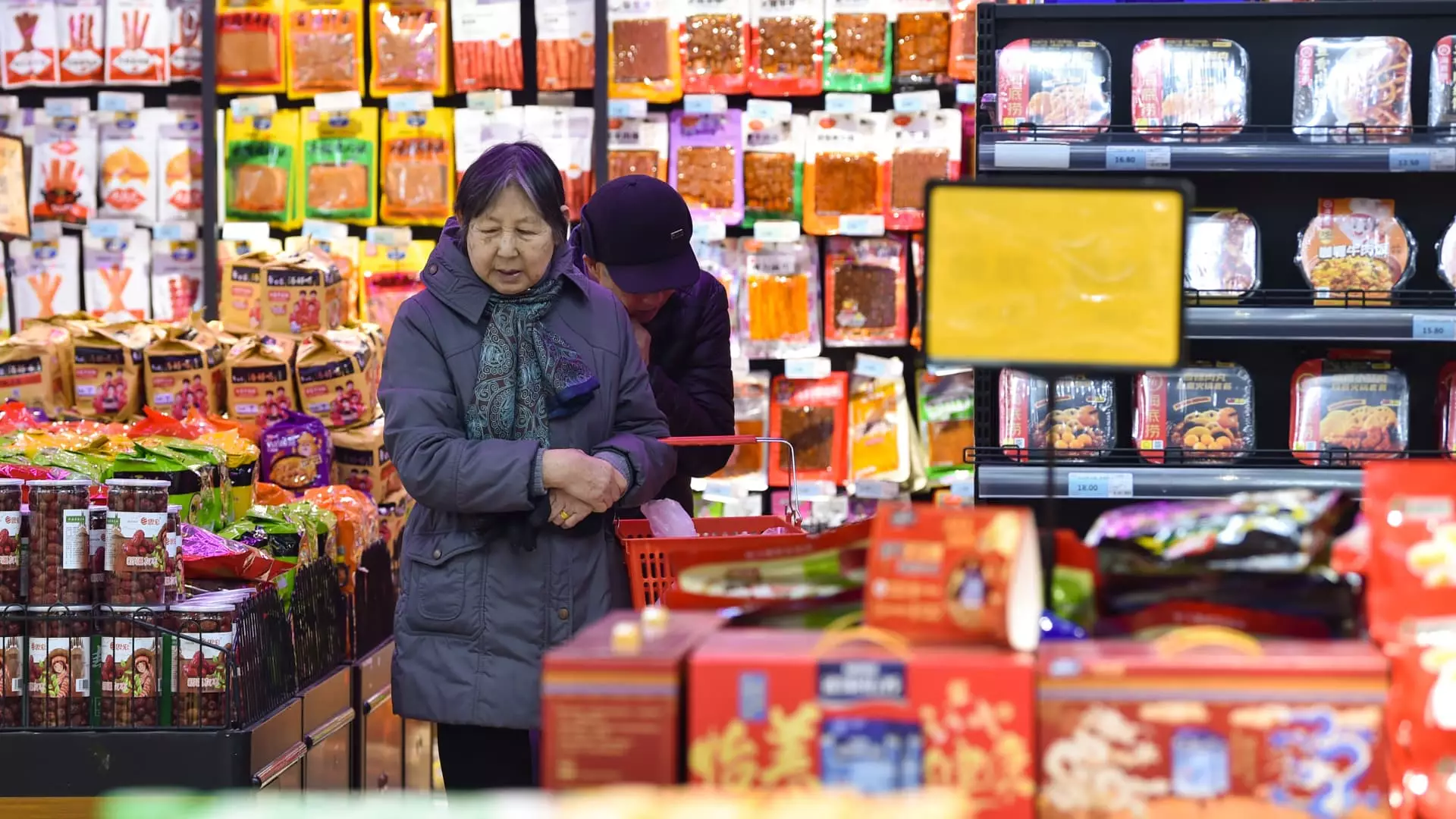China’s economic narrative in the early months of 2024 showcases a complex interplay between rising consumer prices and ongoing producer price deflation, symbolizing a nuanced situation for the world’s second-largest economy. As reported by the National Bureau of Statistics, the consumer price index (CPI) experienced a significant acceleration, rising by 0.5% in January compared to the previous year. This marks an increase from December’s meager growth of 0.1%, surpassing economists’ predictions of a 0.4% rise according to a Reuters poll. Such data indicates a potential shift in consumer behavior, yet it also reveals underlying worries about the broader economy.
To fully assess the implications of these figures, one must consider seasonal influences, particularly the timing of the Lunar New Year celebrations. The holiday season typically sees a rise in consumer spending as families prepare for large gatherings. This year, with the holiday falling in January rather than February as it did the previous year, there was an expected uptick in prices. For instance, certain expenditures related to travel, such as airplane tickets, soared by 8.9%, while entertainment costs, including cinema tickets, surged by 11.0%. These increases in consumer prices may paint a picture of robust demand; however, a closer examination reveals mixed signals regarding consumer confidence and spending consistency.
Despite these initial signs of inflation, consumer spending during the Lunar New Year exhibited weaknesses as well. Reports indicate that year-over-year per capita expenditure growth peaked at a modest 1.2%, a stark contrast to the 9.4% growth seen in 2024. This downturn in consumer enthusiasm is indicative of broader concerns regarding job security and wage growth in China, leading many households to exercise caution in their spending habits. Such hesitance contradicts the apparent increase in certain price categories, unveiling a deeper challenge for policymakers striving to stimulate domestic consumption.
While consumer prices have edged upward, the situation concerning producer prices tells a different story. The producer price index (PPI) diminished by 2.3% year-over-year in January, echoing December’s decline and surpassing the predicted 2.1% drop. This ongoing deflationary trend, which has persisted for 28 months, highlights a significant concern regarding industrial overcapacity and reduced demand for manufactured goods. Xu Tianchen, a senior economist at the Economist Intelligence Unit, emphasizes that shifting producer prices out of deflation may take several quarters, indicating that challenges lie ahead for China’s industrial sector.
Amidst these mixed indicators, growth forecasts for China’s economy remain cautiously optimistic, with a general consensus predicting a growth target of around 5% for 2024. Nonetheless, external pressures, especially from the United States’ tariffs on Chinese exports, loom large over this outlook. While certain segments of China’s economy, like tourism, did witness some resilience during the holiday period, the ongoing contraction in manufacturing sectors raises urgent calls for further economic stimulus.
Outlook: Policy Responses Needed
The current economic landscape emphasizes a dichotomy where rising consumer inflation exists alongside persistent producer deflation. Policymakers are urged to tackle this imbalance head-on, with analysts suggesting that without decisive action to stimulate domestic demand, these deflationary trends may continue to overshadow any consumer price gains. The anticipated lack of immediate changes in monetary or fiscal policies before the annual parliamentary session in March adds a layer of uncertainty, as the economic climate evolves amid both domestic concerns and global pressures.
As China navigates these contradictory economic signals, the urgent need for a strategic approach to bolster consumer confidence and address industrial challenges becomes increasingly evident. Without adaptive policies to counter rising inflationary pressures and support manufacturing revitalization, the country’s economic trajectory may face significant headwinds in the coming months.

Leave a Reply